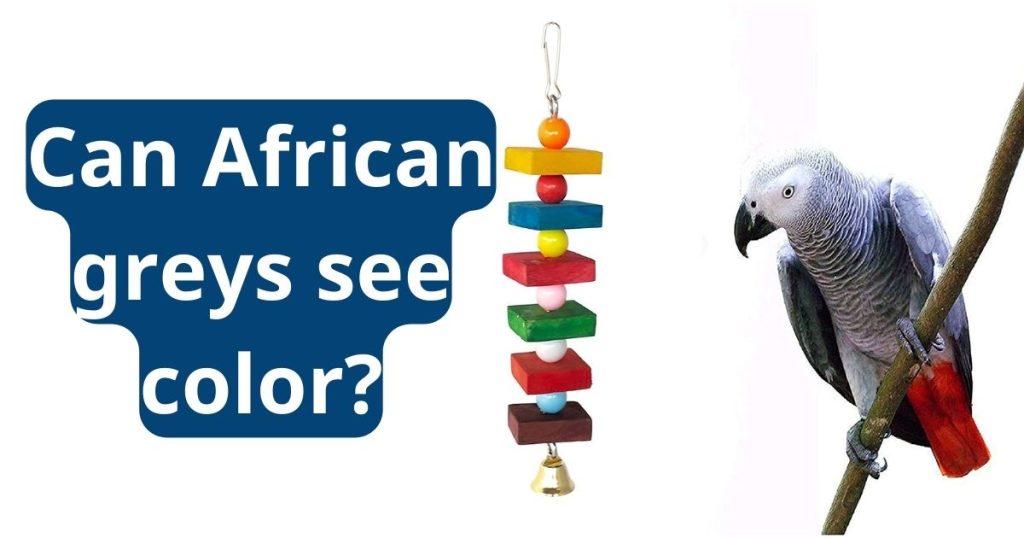How Can African Greys See Color?

African grey parrots are very intelligent creatures. They can speak multiple languages, tell jokes, and even build logical sentences. Their innate high intelligence can make them demanding pets. They require lots of mental stimulation or they might resort to unpleasant behaviors like feather picking and gnawing. Congo African greys are darker than Timneh African greys. They also have white scalloping on their head feathers.
They have a special eye.
African greys have unique eyes that can reveal a lot about their emotional state. Their irises can move rapidly, enlarging and contracting as their body and environment change. This eye communication, called “pinning”, is a way for them to communicate with their owners and can help them understand their feelings.
Eye care for African greys is a vital part of maintaining their health and promoting a strong bond with their owner. They should receive regular veterinary checkups to ensure proper eye health and prevent infection. Proper diet, environmental enrichment, and regular interaction can also contribute to a healthy lifestyle for this popular pet.
While African greys have a long lifespan, there are some things that can shorten their lives, including improper diet, infections, and stress. A healthy parrot should live about 30 years in captivity, and it is important to take care of them well in order to ensure a happy, fulfilling life for both the bird and the owner.

They can see ultraviolet light.
African Greys are one of the most popular pet birds and are considered one of the smartest. Fully grown African Grey parrots have been shown to have a mental capacity comparable to toddlers and are capable of imitating human speech, recognizing shapes and colors, understanding number sequences, asking questions without being asked, and more.
Parrots have three types of cone photoreceptors that allow them to see color, but the African Grey’s retina contains a fourth type of photoreceptor, allowing it to see ultraviolet light. This gives them a special ability to recognize their own species, which is important for survival.
You can encourage your African Grey to see the full spectrum of color by exposing them to natural sunlight. However, do not put their cage in direct sunlight as normal glass blocks the beneficial UV rays while amplifying infrared rays that cause heat. It is also important to give your bird plenty of toys and provide them with a balanced diet.

They can see blue.
African greys have three kinds of photoreceptors called cones in their eyes. These allow them to see a wide range of colors, and they can make fine distinctions between shades. They can also see ultraviolet light.
Besides being an intelligent bird, the African grey is a beautiful addition to any home or aviary. This species requires a lifetime commitment, so it’s important to weigh in carefully whether this is the right bird for you.
African greys are diurnal birds, so they’re most active during the daytime hours. But their night vision is not as good as ours, so you should cover any open light bulbs to prevent burn injuries if your parrot happens to perch on one.

They can see green.
These African grey parrots can see green, along with blue and ultraviolet light. Their ability to see green helps them survive and interact with their environment. This is why it’s so important to provide them with a healthy diet that includes plenty of fresh, leafy green vegetables.
This species is one of the most intelligent pet birds in the world. They can learn human words and use them in context to communicate with their owners. They also have a remarkable emotional level, comparable to a 5-year-old child.
In the wild, African greys live in highly social groups. They display altruistic behaviours such as grooming each other and regurgitating food to feed members of the group. These traits can be hard to replicate when you keep them as pets, since they often feel stressed out and exhibit self-harming behaviours like tearing out their feathers.
These animals are prone to calcium deficiency, so make sure they eat enough of the right foods. If you notice that your African grey sneezes, has a bluish tint to their skin and mucous membranes, is exhibiting symptoms of respiratory infections, and loses weight, take them to the vet immediately.



